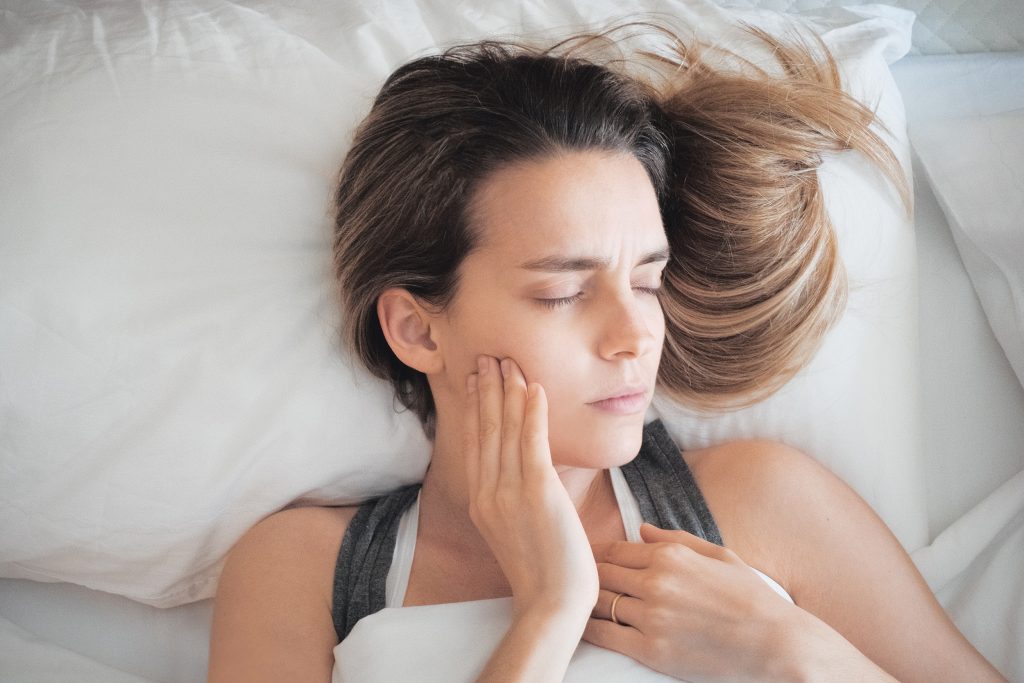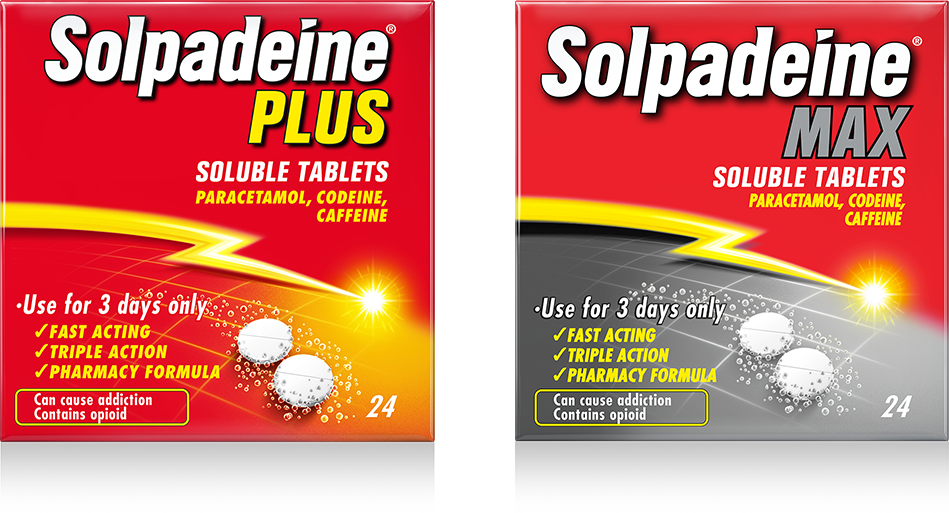What is toothache?
Toothache is pain in and around the teeth and jaws. It’s usually caused by tooth decay,
but there can be other causes.1
Toothache causes
There can be various toothache causes, including:1
• A hole in a tooth caused by tooth decay
• A cracked tooth
• Loose or broken fillings
• An infection of the pulp inside the tooth
• Receding gums exposing sensitive roots
• An abscess
• Wisdom teeth growing
• Sinusitis spreading to the upper jaw area
• Damage to the jaw joint

Toothache types
Tooth pain may come and go, or be constant. Eating and drinking can make it hurt more, especially if the food or drink is either very hot or very cold. It might be difficult to tell whether the pain is related to your upper or lower teeth. It’s often worse at night, and when lying down.1

Toothache symptoms
The level of pain can vary. It can come on suddenly and feel like a sharp, stabbing pain. Sometimes the pain radiates out to the ear. It can also feel like sinus pain. Your jaw might feel sore or tender, too. Depending on the cause, the pain can also be dull.1
Toothache relief
There are different types of treatments, depending on what’s causing the pain. You should make an appointment to see your dentist so that they can help identify what’s triggering the discomfort.1

The dentist will remove the decayed area and put a new filling in.1
If part of your tooth has come off, and you still have the piece, a dentist might be able to glue it back on. Failing that, you could have a filling or a crown. The crown completely covers the broken tooth.2
The filling will need replacing, and any decay will be removed.1
Sometimes root canal treatment is necessary. This involves removing the infected pulp and replacing it with a filling, and sealing it to try and stop it becoming infected again. This is usually done under local anaesthetic.1
These can usually be treated by having your teeth professionally cleaned by a dentist or hygienist, as well as brushing your teeth twice daily and cleaning between your teeth every day. If the problem is severe, you may be referred to a specialist for further treatment.3
A dentist will need to remove the source of infection and drain away the pus. Sometimes a tooth might need to be removed if it can’t be treated.4
If there isn’t enough room for them, wisdom teeth can grow at an angle, get stuck, or only partially emerge. In this case, they may need to be removed.5
Sometimes, if a person has sinusitis, they can experience the pain as if it’s toothache. This is to do with the links in the nerves in the area of the nose and teeth. If a dentist can find no other cause for the toothache, sinusitis could be the cause. See sinus pain for more information.6
You should eat soft food, like pasta, omelettes and soup, and take painkillers such as paracetamol and ibuprofen. Ice or heat packs may also help, as well as gently massaging the sore area. You should try and relax your muscles. Contact your GP if you can’t eat or drink anything, or the pain won’t go away or is unmanageable.7
If a tooth can’t be saved, or the pain is caused by there not being enough room for new teeth to grow, sometimes removing one or more teeth is the best option.1
There are various ways you can look after your teeth and gums, which can help to avoid pain. Some of the things you can do include:1
• Cutting down on sugar. Try to limit the amount of sweets, cakes and biscuits that you eat, but also bear in mind that drinks like fruit juice and tonic water can be high in sugar, too. Try and avoid adding sugar to tea and coffee, and aim to drink plenty of water if you can
• Brushing your teeth twice a day. Dentists now recommend that you don’t rinse your mouth after brushing with toothpaste, but simply spit out the excess toothpaste, leaving the remaining toothpaste to keep on protecting your teeth.8 For the same reason, it’s a good idea to try not to eat or drink anything for a while after brushing your teeth
• Cleaning between your teeth can be just as important as brushing your teeth every day. There are various products you can buy for cleaning between your teeth, to ensure that there is no food left in the gaps between your teeth after you’ve eaten. If the food is not removed from between your teeth, it can cause a build-up of bacteria in your mouth, which is one of the reasons why people can find that their gums bleed when they brush their teeth. Your dentist or hygienist can recommend which products are best for you to clean between your teeth with
• Avoiding smoking. It doesn’t just stain the teeth, it can contribute to the development of gum disease, which can lead to tooth loss. Because smoking causes a lack of oxygen in the bloodstream, infected gums are unable to heal
• Going for regular check-ups with your dentist. Depending on how healthy your teeth and gums are, your dentist can advise you on how regularly you should get them checked
• Take paracetamol or ibuprofen
• Rinse your mouth with salt water (children should not try this)
• Try a pain-relieving gel which you can rub on your gums. Ask your pharmacist for advice if you’re unsure of which product to try
• Eat soft foods, like yoghurt or scrambled eggs, and avoid chewing on the side where it hurts
If you’ve had toothache for more than one or two days, visit your dentist as soon as possible to determine the specific cause and work out the best course of treatment. In the meantime, it’s important that you keep your teeth and gums healthy by brushing twice a day and using dental floss and mouthwash regularly.1 For toothache relief try Solpadeine Plus or Solpadeine Max, and ask your pharmacist for more advice.
Treat my pain
The Solpadeine range of clinically proven dual and triple action painkillers deliver pain relief when you need it most

References:
1. NHS Inform Scotland. Toothache. Available at: https://www.nhsinform.scot/illnesses-and-conditions/mouth/toothache Accessed July 2021.
2. NHS: Broken or cracked tooth. Available at: https://www.nhs.uk/conditions/chipped-broken-or-cracked-tooth/ Accessed July 2021.
3. NHS: Gum disease. Available at: https://www.nhs.uk/conditions/gum-disease Accessed July 2021.
4. NHS: Dental abscess. Available at: https://www.nhs.uk/conditions/dental-abscess/ Accessed July 2021.
5. NHS: Wisdom tooth removal. Available at: https://www.nhs.uk/conditions/wisdom-tooth-removal/ Accessed July 2021.
6. Shueb SS & Boyer HC. Nonodontogenic “tooth pain” of nose and sinus origin. JADA 2016. 147(6):457-459.
7. NHS: Temporomandibular disorder. Available at: https://www.nhs.uk/conditions/temporomandibular-disorder-tmd/ Accessed July 2021.
8. NHS Live well: healthy body. How to keep your teeth clean. Available at: https://www.nhs.uk/live-well/healthy-body/how-to-keep-your-teeth-clean/ Accessed July 2021.
9. NHS: Toothache. Available at: https://www.nhs.uk/conditions/toothache/ Accessed July 2021.
Solpadeine® Max Soluble Tablets, Paracetamol 500mg, Codeine Phosphate Hemihydrate 12.8mg, Caffeine 30mg For the treatment of acute moderate pain which is not relieved by paracetamol or ibuprofen alone. Contains codeine. Can cause addiction. Use for 3 days only. Always read the leaflet.
Solpadeine® Headache Soluble Tablets contain Paracetamol and Caffeine – a mild analgesic and antipyretic formulated to give extra pain relief. Always read the leaflet.
Solpadeine® Plus, Solpadeine® Max and Solpadeine® Headache products are not recommended for children under 12 years of age.
SolpaOne® 1000mg Effervescent Tablets contains paracetamol only. For the treatment of mild to moderate pain and/or fever. For adults and adolescents over 50kg of body weight aged 16 years and above. Always read the leaflet.

